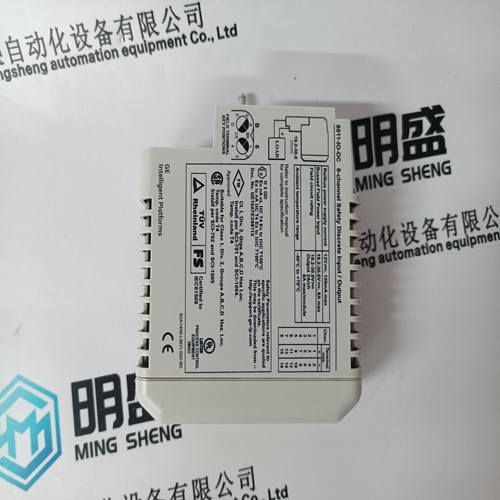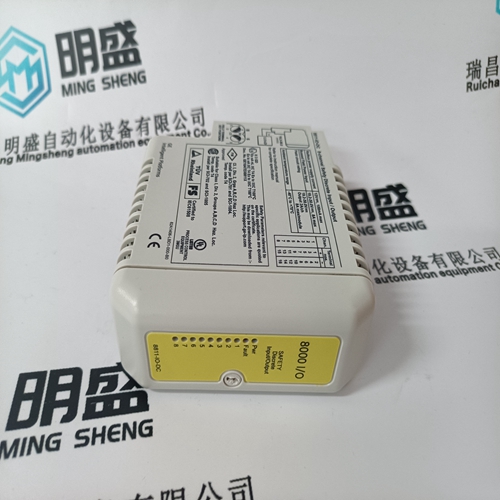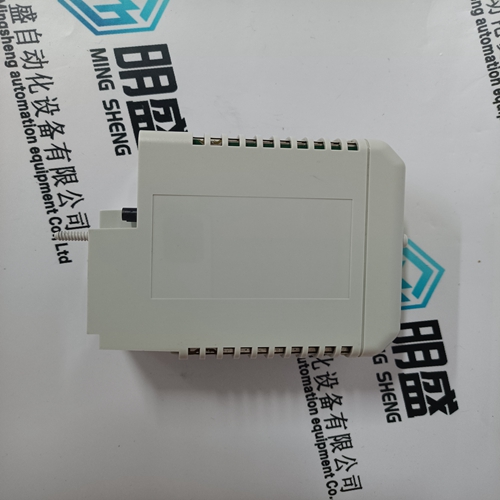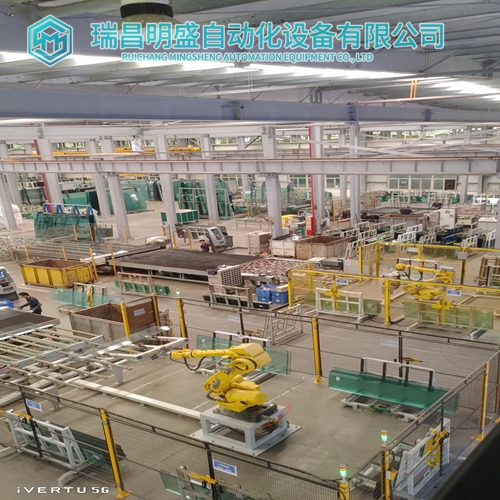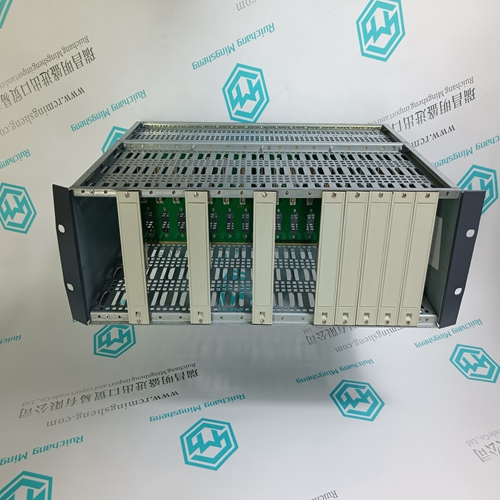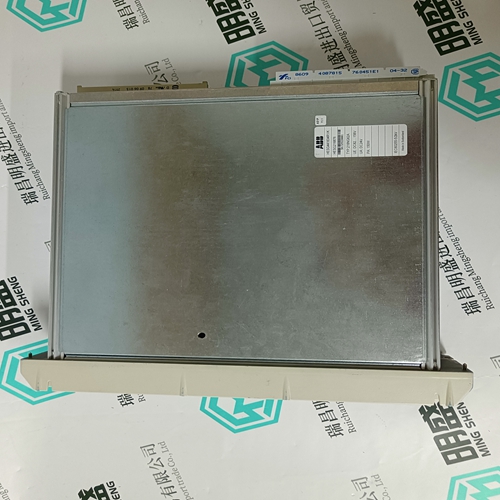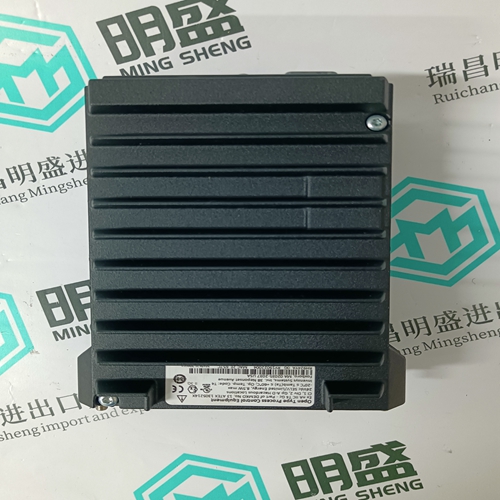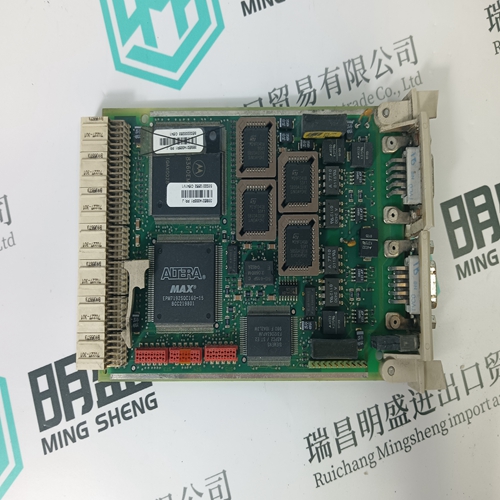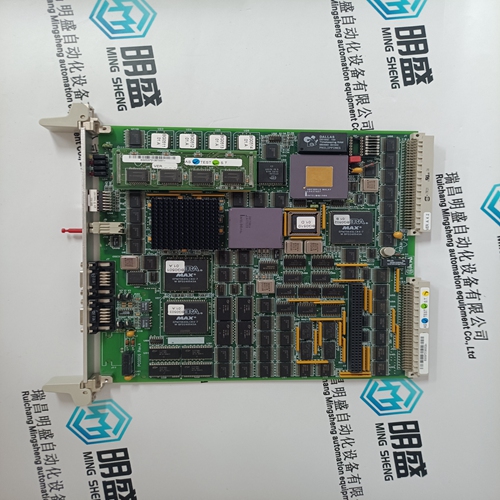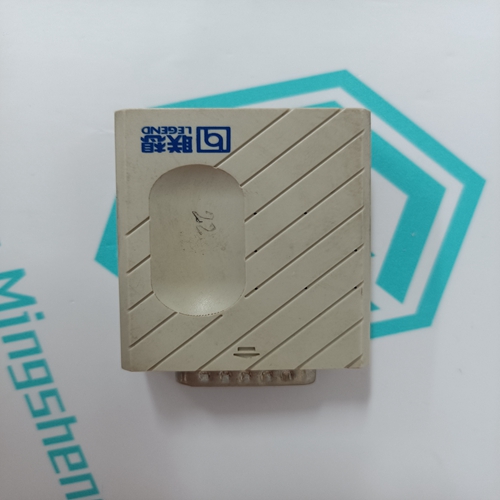Home > Product > Gas turbine system > 8811-IO-DC 8811-IO-DC-01 Analog communication card
8811-IO-DC 8811-IO-DC-01 Analog communication card
- Product ID: 8811-IO-DC 8811-IO-DC-01
- Brand: GE
- Place of origin: the United States
- Goods status: new/used
- Delivery date: stock
- The quality assurance period: 365 days
- Phone/WhatsApp/WeChat:+86 15270269218
- Email:stodcdcs@gmail.com
- Tags:8811-IO-DC8811-IO-DC-01Analog communication card
- Get the latest price:Click to consult
The main products
Spare parts spare parts, the DCS control system of PLC system and the robot system spare parts,
Brand advantage: Allen Bradley, BentlyNevada, ABB, Emerson Ovation, Honeywell DCS, Rockwell ICS Triplex, FOXBORO, Schneider PLC, GE Fanuc, Motorola, HIMA, TRICONEX, Prosoft etc. Various kinds of imported industrial parts
Products are widely used in metallurgy, petroleum, glass, aluminum manufacturing, petrochemical industry, coal mine, papermaking, printing, textile printing and dyeing, machinery, electronics, automobile manufacturing, tobacco, plastics machinery, electric power, water conservancy, water treatment/environmental protection, municipal engineering, boiler heating, energy, power transmission and distribution and so on.
8811-IO-DC 8811-IO-DC-01 Analog communication card
The motor manufacturer will sometimes provide thermal limit information for a hot/cold motor. The 369 thermal model will adapt for these conditions if the Hot/Cold Curve Ratio is programmed. The value entered for this setpoint dictates the level of thermal capacity used that the relay will settle at for levels of current that are below the Overload Pickup Level. When the motor is running at a level that is below the Overload Pickup Level, the thermal capacity used will rise or fall to a value based on the average phase current and the entered Hot/Cold Curve Ratio. Thermal capacity used will either rise at a fixed rate of 5% per minute or fall as dictated by the running cool time constant.
The hot/cold curve ratio may be determined from the thermal limit curves if provided or the hot and cold safe stall times. Simply divide the hot safe stall time by the cold safe stall time. If hot and cold times are not provided, there can be no differentiation and the hot/cold curve ratio should be entered as 1.00.
The 369 thermal replica operates
as a complete and independent model. The thermal overload curves however, are based solely on measured current, assuming a normal 40°C ambient and normal motor cooling. If there is an unusually high ambient temperature, or if motor cooling is blocked, motor temperature will increase. If the motor stator has embedded RTDs, the 369 RTD bias feature should be used to correct the thermal model. The RTD bias feature is a two part curve constructed using three points. If the maximum stator RTD temperature is below the RTD Bias Minimum setpoint (typically 40°C), no biasing occurs. If the maximum stator RTD temperature is above the RTD Bias Maximum setpoint (typically at the stator insulation rating or slightly higher), then the thermal memory is fully biased and thermal capacity is forced to 100% used. At values in between, the present thermal capacity used created by the overload curve and other elements of the thermal model is compared to the RTD Bias thermal capacity used from the RTD Bias curve. If the RTD Bias thermal capacity used value is higher, then that value is used from that point onward. The RTD Bias Center point should be set at the rated running temperature of the motor. The 369 will automatically determine the thermal capacity used value for the center point using the Hot/Cold Safe stall ratio setpoint.
In simple terms, the RTD bias feature
is real feedback of measured stator temperature. This feedback acts as correction of the thermal model for unforeseen situations. Since RTDs are relatively slow to respond, RTD biasing is good for correction and slow motor heating. The rest of the thermal model is required during starting and heavy overload conditions when motor heating is relatively fast. It should be noted that the RTD bias feature alone cannot create a trip. If the RTD bias feature forces the thermal capacity used to 100%, the motor current must be above the overload pickup before an overload trip occurs. Presumably, the motor would trip on programmed stator RTD temperature setpoint at that time.
Once the magnitude of either phase A, B, or C exceeds the Pickup Level × Phase CT Primary for a period of time specified by the delay, a trip will occur. Note the delay is in addition to the 45 ms instantaneous operate time. There is also a backup trip feature that can be enabled. The backup delay should be greater than the short circuit delay plus the breaker clearing time. If a short circuit trip occurs with the backup on, and the phase current to the motor persists for a period of time that exceeds the backup delay, a second backup trip will occur. It is intended that this second trip be assigned to Aux1 or Aux2 which would be dedicated as an upstream breaker trip relay
